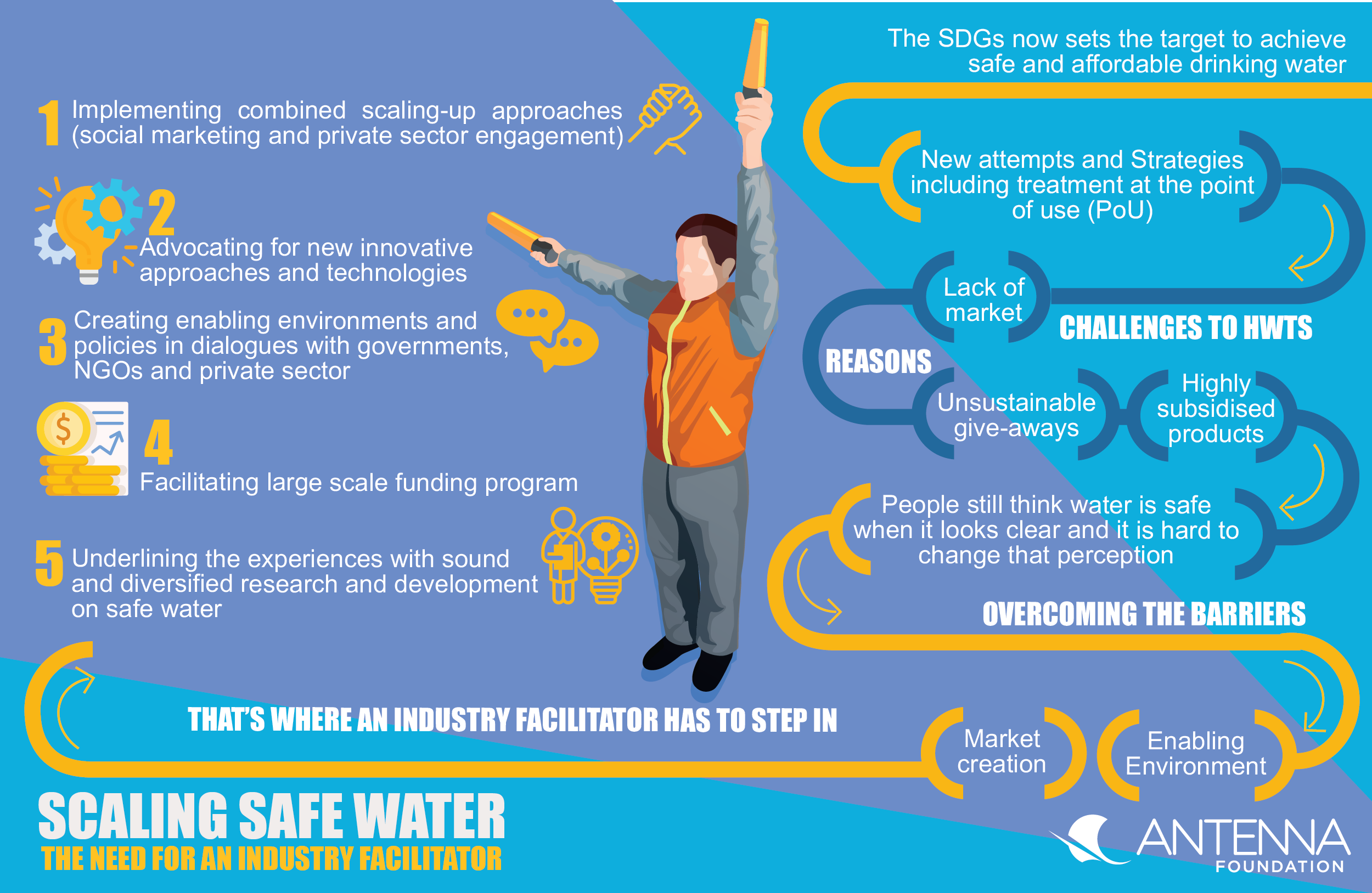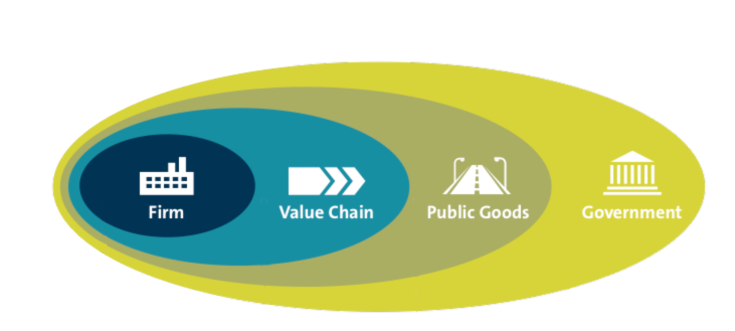
This background factsheet introduces the reader to what an "industry facilitator" does and why such intermediaries are important.
Subscribe here to the new Sanitation and Water Entrepreneurship Pact (SWEP) newsletter. SWEP is a network of organizations joining hands to help entrepreneurs design and develop lasting water and sanitation businesses.
The focus on water quality changed – not yet being included in the MDGs (Millenium Development Goals) – the new SDG 6.1 (Sustainable Development Goals) now sets the target not only to achieve quantitative access to water but also to safe and affordable drinking water. If a real progress shall be made in this regard, new attempts and strategies are needed, including treatment at the point of use (PoU). Many different promising market driven initiatives are already on the way to promote safe water (context-specific delivered water and/or HWTS) considering people more as customers and not as beneficiaries (BoP background). Based on aspirational values, HWTS approaches have shown to be feasible, but are so far they are limited in scale because of a lacking market. Reasons for this non-existing market are unsustainable give-aways or highly subsidised products that are mostly used in emergencies and in a curative, rather than in a preventive way. Additionally, there is a tremendous lack in awareness. In certain regions a majority of people still think water is safe when it looks clear - and it is hard to change that perception. Such scaling-up barriers and hurdles have been prominently analysed and discussed by a group of consultants around Harvey Koh, which was published in 2011 in the report “Beyond the Pioneer”. To create sustainable markets Koh et al. are calling for an approach of “collective impact” to remove the hurdles in place. Because of the barriers for up-scaling the process is in many cases not associated at the firm level, but at the level of value chain or even higher, it is important to look at the whole enabling environment, at the level of public goods and the government.

To overcome these barriers to scale one key element is to have an enabling environment, locally and on a global level, that allows progress in sustainable and affordable safe water provision. Market creation can be achieved through massive hygiene and public awareness campaigns. That’s where an industry facilitator has to step in. An industry facilitator identifies hurdles and barriers across the board and orchestrates all public and private actors to develop a common agenda and strategy. This coordination, at a global or regional level, creates a conducive enabling environment that allows the different public and private actors to reach scale. This methodology is called “collective impact”.
For the case of safe water, the role of an industry facilitator could include:
- Implementing combined scaling-up approaches (social marketing and private sector engagement)
- Advocating for new innovative approaches and technologies,
- Creating enabling environments and policies in dialogues with governments, NGOs and the private sector,
- Facilitating large scale funding programs and
- Underlining the experiences with sound and diversified research and development on the many aspects of safe water.
Learning from the revolution in sanitation shows how major achievements can be made when making use of an industry facilitator. With the emergence of sanitation marketing and CLTS (financed by public funds and not by the private sector – so called blended finance), and a mature private sector investing in market creation – major improvements have been made in the access to toilets. Of main importance for this development was that the World Bank’s Water and Sanitation Programme (WSP) has played the role of industry facilitator. The WSP promoted sanitation in certain lead countries (e.g. Bangladesh) and invested in research and steering advocacy to achieve the set goals at a global level. While much progress has been made in marketing water treatment solutions and safe water directly to households - considering people more as customers and not as beneficiaries - there are still some major barriers to overcome to bring safe water to scale. In this regard, major changes have to happen in access to safe water, notably creating an enabling environment and strengthening the involvement of the private sector.
One fly is deadlier than 100 Tigers
From Blueprint to Scale: The case for philanthropy in impact investing
This report discusses the newest developments of entrepreneurial pioneers implementing market-based innovations to serve the global poor. These ambitious entrepreneurs are taking great risks for little potential financial reward, but for tremendous potential social value. Such ideas have elicited a rush to the new field of ‘impact investing’. But the field is young and many investors report that they are struggling to find good opportunities in which to invest for impact.
KOH, H. KARAMCHANDANI, A. KATZ, R. (2012): From Blueprint to Scale: The case for philanthropy in impact investing. Arlington, VA: Monitor Group URL [Accessed: 07.03.2018] PDF

